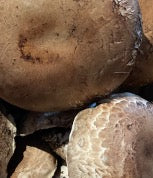Macronutrients
Three macronutrients can be found in fruits and vegetables, such as carbohydrates, protein, and fats.2 Carbohydrates are the primal sources for energy (ATP) in the body that can be utilized quickly as glucose or reserved for later utilization as glycogen.2 Fiber is a type of carbohydrate.2 The second macronutrients are proteins, which are used to balance metabolic processes and support the immune system against pathogens in the human body.2 Fats are another macronutrient that provides energy storage and guards bones and significant organs in the body.2 Here is the chart that describes the daily percentage of calories based on each macronutrient and the fruits and vegetables that provide those macronutrients:3
|
Macronutrients |
Carbohydrates
|
Proteins
|
Fats |
|
Percent of total Calories intake |
45-65% 3 |
10-35%2 |
20-35%3 |
|
List of Fruits and Vegetables |
Fruits: Any piece of fruit2 Vegetables: Most vegetables have small amounts; however, potatoes, peas, and corns have high levels of carbohydrates.2
Fiber: Fruits: Strawberries1, Apples1, Raspberries1, Kiwis4, Pineapples4, and Bananas4, Dragon Fruits4, Acai Berries4, and different types of multicolored fruits1 Vegetables: Peas1, Carrots1, and different types of multicolored vegetables1 |
Fruits: a few fruits2, such as Mangoes4, Guavas4 and Dragon Fruits4 Vegetables: Peas2 |
Fruits: Avocados3
|
Micronutrients
There are two categories of micronutrients, which are vitamins and minerals.2 There are two types of vitamins solvability such as water and fat.2
Water-Soluble Vitamins
The vitamins that have water solvability can move quickly inside the body and are secreted out of the body by the function of the kidneys.2 The body just needs small amounts of water-soluble vitamins.2
|
Water-Soluble Vitamins |
Purpose |
Fruits and Vegetables |
|
Thiamine (Vitamin B1)2 |
-Utilize in nervous system2 |
-Vegetables: Peas2 |
|
Riboflavin (Vitamin B2)2
|
-Vital for excellent eyesight and epidermis (skin)2 |
-Vegetables: Chard1, Cabbage1, Romaine1, Bok choy1, Spinach1, and Kale1
|
|
Niacin (Vitamin B3)2
|
-Essential for nerves, gastrointestinal, and epidermis function2 |
-Vegetables: Mushrooms2, Asparagus2, Chard1, Cabbage1, Romaine1, Bok choy1, Spinach1 and Kale1 |
|
Pyridoxine (Vitamin B6)2
|
-Aids in the formation of red blood cells2 |
-Fruits: Bananas3, Pineapples4, Guavas4, and Mangoes4 -Vegetables: Potatoes3 |
|
Folic acid2
|
-Help enzymes with the formation of DNA and fresh cells such as red blood cells2 |
-Vegetables: Chard1, Cabbage1, Romaine1, Bok choy1, Spinach1 and Kale1
|
|
Cobalamin (Vitamin B12)2 |
- Help enzymes with fresh cells and vital for the nervous system2 |
Not found in fruits and vegetables2 |
|
Ascorbic acid (Vitamin C)2
|
-Essential for immune health, and helps uptake of iron in the body2 |
-Fruits: Citrus fruits2, Strawberries2, Tomatoes2, Papayas2, Cantaloupe2, kiwi2, Avocados4, Bananas4, Guavas4, Acai Berries4, and Mangoes2 -Vegetables: Cabbages2, Peppers2, Lettuce2, Potatoes2, and Broccoli1 |
Disclaimer: Please consult your primary care physician about specific dietary intakes of macronutrients and micronutrients.
- American Academy of Family Physicians. (2022). Changing your diet: Choosing nutrient-rich foods. https://familydoctor.org/changing-your-diet-choosing-nutrient-rich-foods/
- Pomona College. (2022). Macronutrients: Carbohydrates, Fats, and Proteins. https://www.pomona.edu/administration/dining/health-wellness/macronutrients
- Washington State University. (n.d.). Nutrition Basics. https://mynutrition.wsu.edu/nutrition-basics
- Staughton J. (2020). Tropical Fruits: Health Benefits & Nutrition Facts. Organic Facts. https://www.organicfacts.net/tropical-fruits.html




